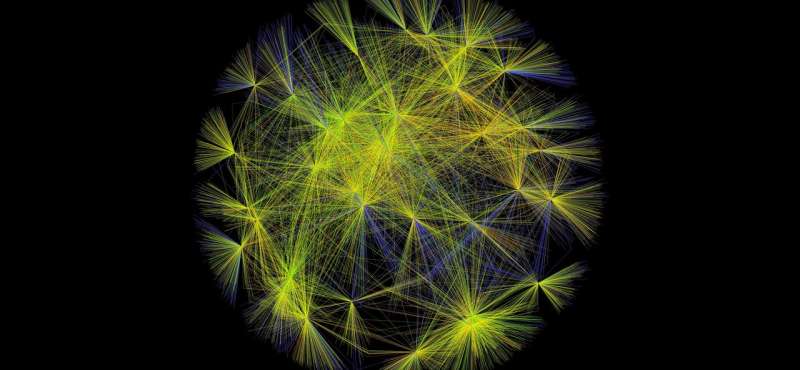'Hidden' driver discovered that helps prime the anti-tumor immune response

Like exposing a crime boss whose authority has gone undetected, St. Jude Children's Research Hospital scientists have identified a hidden driver that influences production of the T cells that fight cancer and infections. The study appears today as an advance online publication in the journal Nature.
The hidden drivers are kinases (enzymes) Mst1 and Mst2. Researchers showed Mst1 and Mst2 work together to regulate the function of different dendritic cell types (subsets). Dendritic cells are key regulators of the adaptive immune system, including the T cells that are central to cancer immunotherapy.
"Dendritic cells are crucial for activating the adaptive immune response, including priming anti-tumor T cells," said Hongbo Chi, Ph.D., a member of the St. Jude Department of Immunology. "But regulation of the distinct functions of different dendritic cell subsets have been poorly understood. We wanted to change that.
"These findings provide clues for new treatment strategies for cancer or immune disorders by modulating the activity of dendritic cells to shape the immune response," said Chi, who is co-corresponding author of the research with Jiyang Yu, Ph.D., an assistant member of the St. Jude Department of Computational Biology. Xingrong Du, Ph.D., a postdoctoral fellow in Chi's laboratory, is the first author.
Taking a Systems Approach
A data-driven, systems biology algorithm called NetBID played a key role in the research. Yu and his colleagues developed NetBID, short for data-driven network-based Bayesian inference of drivers.
Yu and his team integrated gene expression, whole proteomics and phosphorylated proteomics data from Chi's laboratory and other sources to reverse engineer biologic networks in mouse dendritic cells. Researchers used NetBID to analyze differences in networks of the different dendritic cell subtypes. To their surprise, Mst1/2 and the Hippo signaling pathway emerged as a key regulator of dendritic cell function and the T cell response.
"The Hippo pathway is known for regulating organ size in animals, not immune function in dendritic cells," Chi said. Yu compared Mst1/2 to a crime boss whose role is concealed behind several layers of subordinates. "A data-driven systems approach gave us a way to find the hidden drivers that underlie the differential functions of the dendritic cell subsets," Yu said.

Interdisciplinary collaboration was essential to the research, Chi added.
Metabolism and Signaling
This study focused on dendritic cell subsets that have distinct effects on the immune system. One, CD8α+ dendritic cells, primes production of CD8 T cells central to fighting tumors and infections. The other, CD8α- dendritic cells, primes production of a different T cell subtype.
Researchers compared metabolic activity in the different dendritic cells and found that the CD8α+ dendritic cells were more metabolically active than CD8α- dendritic cells. They reached that conclusion by comparing oxygen metabolism in the cells' power plants, mitochondria. Investigators also showed that manipulating metabolism affected CD8α+ dendritic cell function and T cell priming.
"While metabolism is known to be important generally in the immune response, this study defines, we believe for the first time, that not only is it important in dendritic cell function, but that the two dendritic cell subsets have distinct metabolism controlled by Hippo signaling," Chi said. "In addition, we showed that manipulating metabolism directly affects function of the dendritic cell subset."
Researchers also showed that Mst1/2 played a pivotal role in cytokine signaling, which is essential for priming T cells and ensuring a robust immune response. Cytokines are small secreted molecules that modulate the immune response.
Rather than working through the conventional signaling pathways, investigators showed that Mst1/2 takes an unconventional route to prime T cells. Mst1/2 uses the NF-κB signaling pathway rather than convention pathways to trigger production of the cytokine interleukin-12 (IL-12). IL-12 promotes CD8α+ dendritic cell function and primes CD8 T cell responses.
"The research shows that Mst1/2 integrate metabolic activity and cytokine signaling to selectively drive CD8α+ dendritic cell function," Chi said.
"The NetBID algorithm can be used to mine other datasets for hidden drivers and explore biological questions," Yu said. "The algorithm has already been used to analyze network differences among different cancer subtypes or between drug-resistant and sensitive cancer patients for identification of potential therapeutic targets and biomarkers. The key is data-driven and context-specific networks," he said.
More information: Hippo/Mst signaling couples metabolic state and immune function of CD8a+dendritic cells, Nature (2018). DOI: 10.1038/s41586-018-0177-0 , www.nature.com/articles/s41586-018-0177-0

















